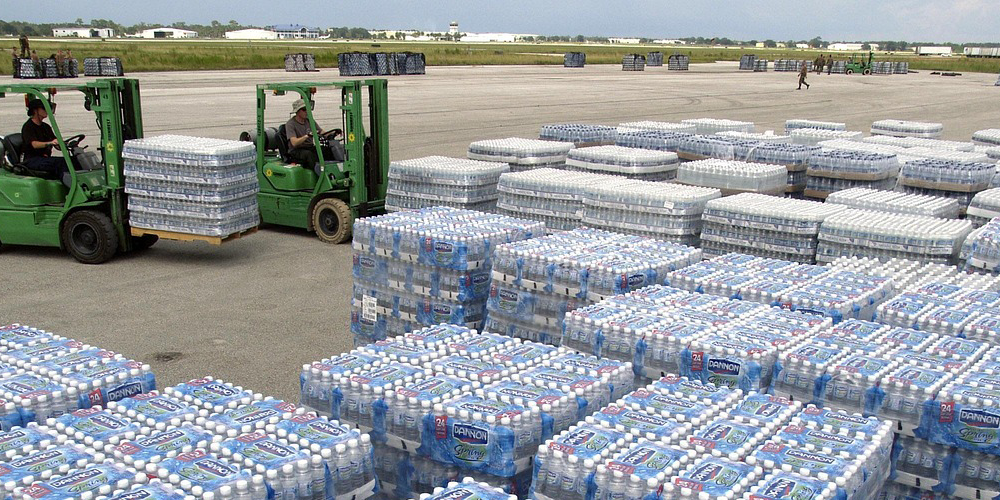Perception of purity: Is bottled really better?

Bottled water is often marketed as a cleaner, safer alternative to tap water. Images of pristine mountain springs and untouched glaciers adorn the labels, evoking a sense of natural purity. This perception has been reinforced by clever advertising, leading consumers to believe bottled water is the gold standard of hydration.
However, the reality is more complex. While some bottled waters do come from natural springs, many are simply filtered tap water, often indistinguishable from what flows from your kitchen tap.
A study by Griffith University, as part of the ABC series, War on Waste, revealed that many popular Australian bottled water brands are essentially treated tap water.
This suggests that consumers pay more for the packaging rather than the water itself. A similar observation was reported in the United States where the Environmental Working Group revealed that more than 50% of bottled water was derived from municipal sources.
The findings align with the broader critique that bottled water often comes from municipal sources and undergoes minimal treatment before being sold at a premium.
The question then arises: are consumers paying for the water itself, or merely the convenience and the brand?
Environmental impact
The convenience of bottled water comes at a significant environmental cost. Each year, millions of plastic bottles are produced, transported and discarded, contributing to the growing global plastic waste crisis. Even with recycling efforts, a large proportion of these bottles end up in landfill or polluting our oceans.
Indeed, 11 million tons of plastic pollution is estimated to be sitting on the ocean floor.
Moreover, the production and transportation of bottled water consumes vast amounts of energy and resources, further exacerbating environmental challenges. When you consider the carbon footprint of bottled water, the environmental implications become difficult to ignore.
As cited by many, including the Earth Policy Institute and the Worldwide Fund for Nature (WWF), it's estimated that the production of bottled water requires up to 17-18 million barrels of oil annually – enough to fuel over a million cars for a year. This staggering figure underscores the hidden environmental cost of our bottled water habits.
Safety and regulation
One of the primary reasons consumers choose bottled water is the perceived safety it offers. But is bottled water safer than tap water? In many developed countries, tap water is subject to stringent regulations and frequent testing, ensuring it meets high safety standards. In contrast, the bottled water industry is often less regulated, with standards varying widely by region.
In some cases, bottled water has been found to contain contaminants at levels comparable to, or even exceeding, those in tap water. For example, a study conducted by Orb Media in 2018 found microplastics in 93% of the bottled water samples tested across nine countries. In Australia, a 2022 study found that 94% of bottled water samples contained microplastics, with an average concentration of 13 microplastics per litre.
The study also revealed that imported bottled water contained four times more microplastics than locally sourced brands, highlighting potential differences in contamination levels between domestic and imported products.
Additionally, the chemicals used in plastic bottles, such as BPA and phthalates, can leach into the water, raising potential health concerns.
Australia has a broad definition of bottled water, which includes sparkling and flavoured waters – unlike in countries like the United States, where these are classified separately. Sparkling water, with its carbonation, is more acidic and can erode tooth enamel, making it less ideal for daily consumption compared to tap water.
A 2022 study (Schmidt and Huang) found that 81% of bottled waters tested in Australia were erosive to tooth dentine and 74% to enamel, with flavoured and sparkling waters being the worst offenders. These findings challenge the perceived purity of bottled water, suggesting that consumers may be paying more for a product that carries hidden health risks rather than true benefits.
The cost of turning on your tap
Beyond environmental and safety concerns, the cost of bottled water is a significant factor. Bottled water can be up to 2000 times more expensive than tap water, making it a costly choice for consumers. This raises the question: is the perceived convenience and safety worth the premium price?
For many, the answer may lie in the middle ground. Using reusable water bottles and investing in a good water filtration system can provide the convenience of bottled water while minimising environmental impact and ensuring safety.
The trust factor
Ultimately, trust plays a crucial role in our drinking water choices. Whether it’s tap or bottled, consumers want to feel confident that what they’re drinking is safe and of high quality. Building this trust requires transparency from both the bottled water industry and public water utilities.
Consumers should have access to information about the source of their bottled water, the treatment processes it undergoes, and the results of safety tests. Similarly, public water utilities must continue to maintain rigorous standards and communicate openly with the public about water quality.
As consumers, we have the power to demand greater transparency from the bottled water industry and support initiatives that protect and improve our public water systems.
Research, data and analysis for this article was conducted by Sequana Civil Engineer Suhaib Malkawi.
